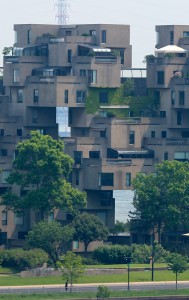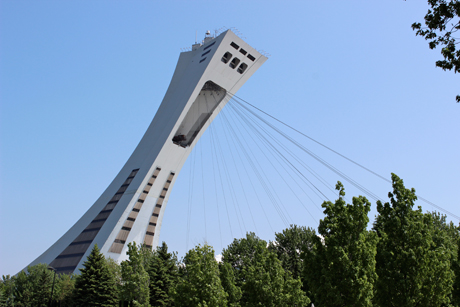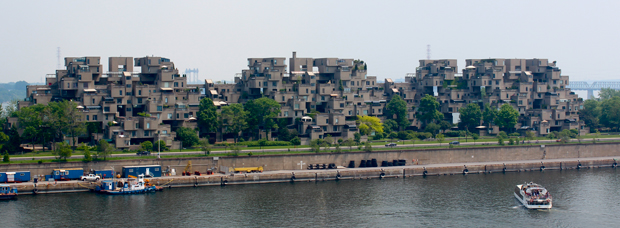Each time I travel I make new discoveries, and often, insights and inspiration comes only once I’m back home and have had a chance to unwind and process the whirlwind adventures.
On this trip which began on the St. Lawrence River in Montreal, Canada, I became particularly focused on the art and design in architecture (probably because there wasn’t much wildlife or sport activities in our itinerary). I found the range in age and architectural styles to be visually stimulating without appearing to end up in a hodge-podge of visual clutter.
On returning from our journey and buckling down to design a newspaper, I realized I was bringing the patterns and shapes in the architecture I had recently experienced to my design work. Since the job was real estate related, it seemed appropriate to introduce either landscape or architecture to the design theme. Many people don’t realize how much research goes into good design. The internet makes research a guilty pleasure, and can be a guide to future travels, but there is no substitute for experiencing the world firsthand.

Units appear to be precariously stacked in an almost haphazard manner, not unlike a Jenga game. Modules jut in and out, up and down, likely providing as many river views as possible.
There are all sorts of oddly designed buildings around the world, and I found a couple in Montreal, Canada. The complex of condos makes a graphic backdrop while cruising the St. Lawrence. From a distance one begins to see a pattern in the way the units assemble to create the whole. Taken to a two-dimensional graphic space in Photoshop or any image editing program, the lights and darks play in the space creating a lively background pattern.

This small graphic was made by cropping the original photo, adjusting the levels, posterizing to three levels, and reducing the opacity to 25 percent.
While this complex uses cubes, rectangles and oddly stacked modules to distribute space, another Olympic-era structure across town uses line and angle to tease the eye.

The Montreal Tower is the highest inclined tower in the world at 165 metres high and has a 45 degree angle.
The Montreal Tower, constructed for the 1976 Olympics, leans 45 degrees and stands tall enough to provide a panoramic view of the St. Lawrence valley. The cables running opposed to the apparent mass of the structure seem to tug the tower toward the ground, making one wonder how it is supported.
It occurs to me that the architects of these and other similarly bizarre structures around the world must also be puzzle-game fanatics who get a kick out of stumping their friends and relatives. These guys must love the looks on our faces as we ogle the oddities.
These are not the only Jenga building or precariously angled structures in the world. For more quirks in the urban landscape, check out these Rubik’s Cube and Jenga buildings.

